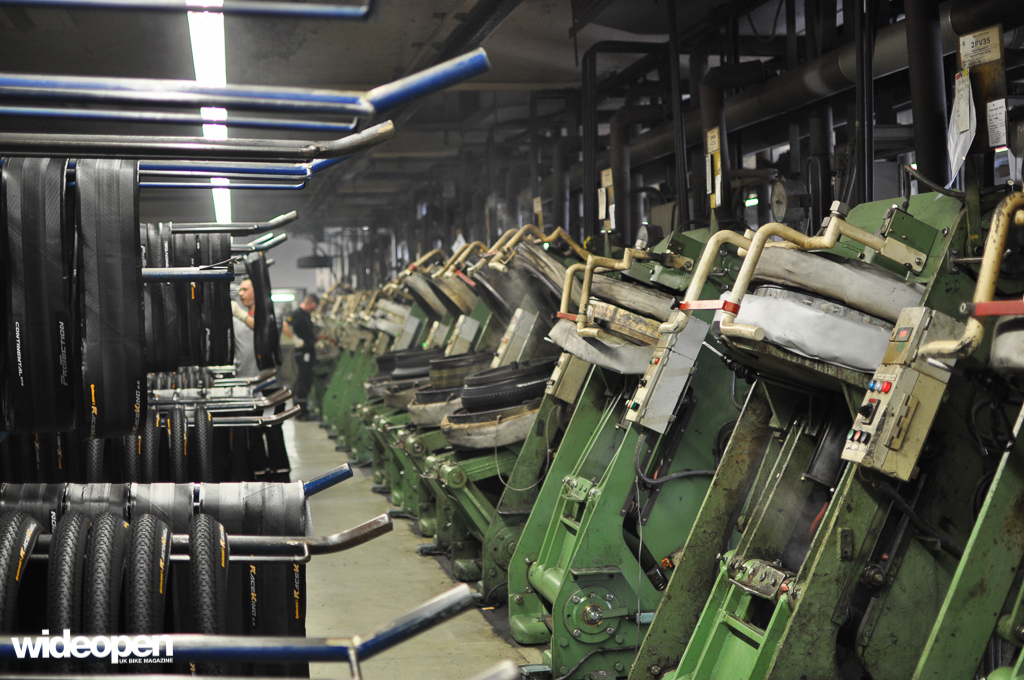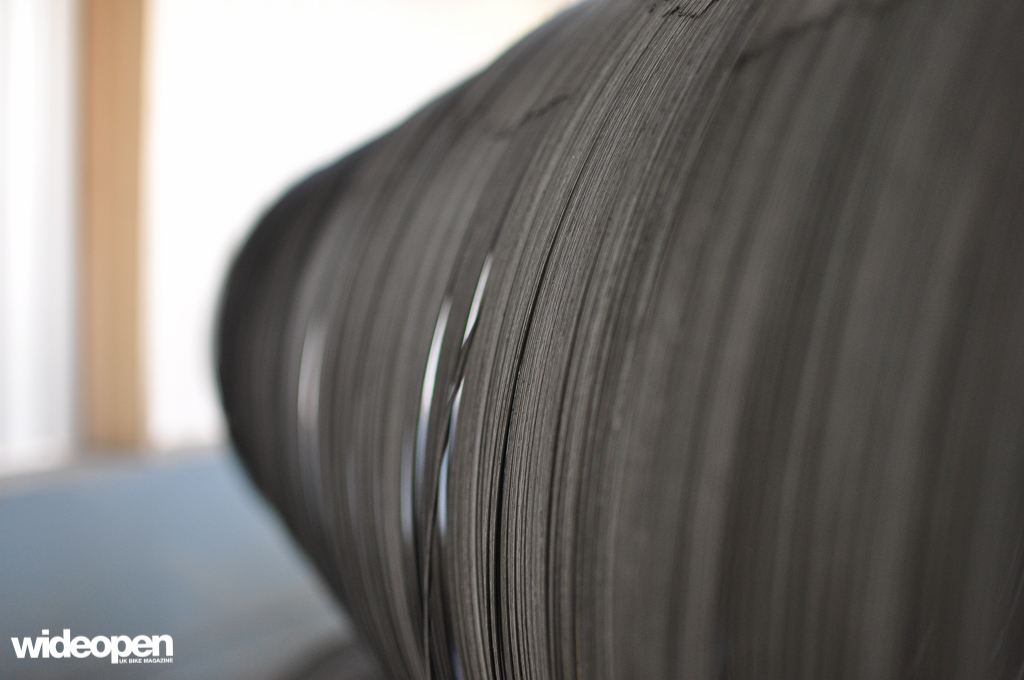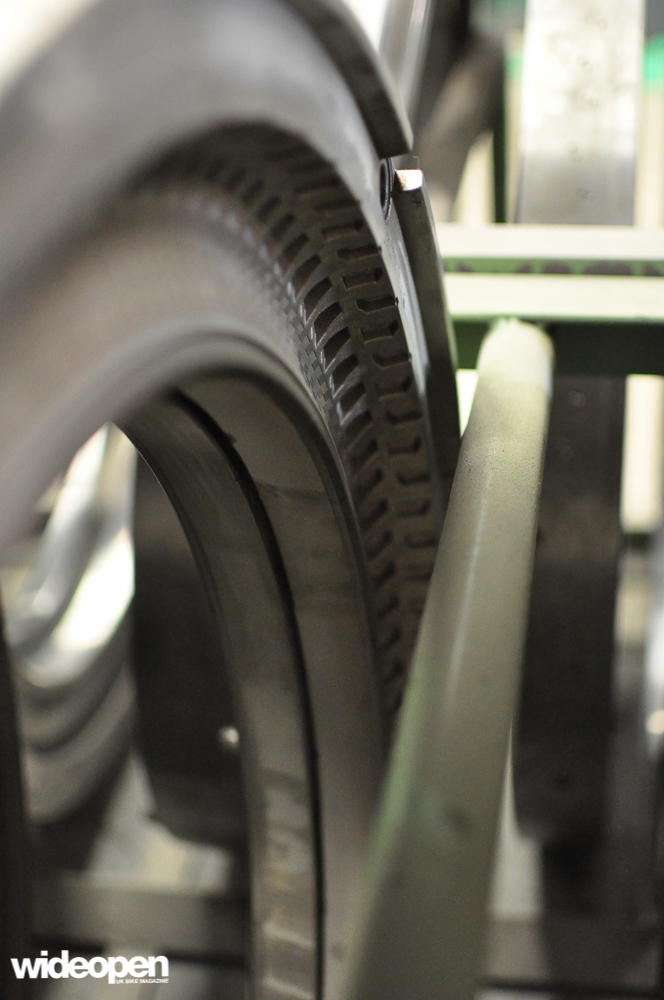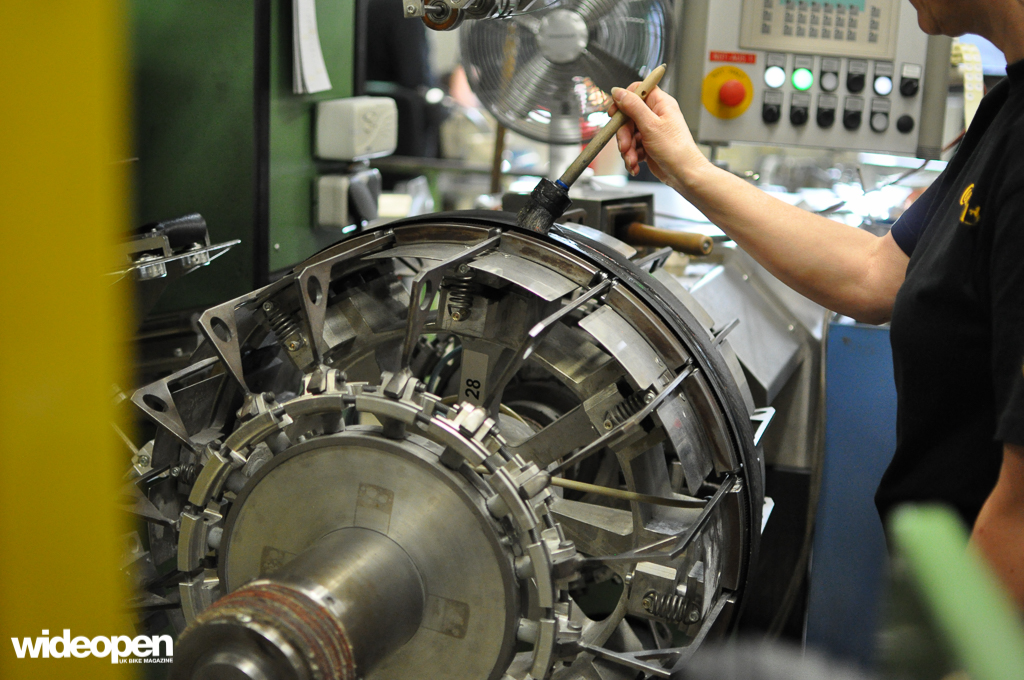Behind the scenes: Continental Tyres HQ, Germany
By Pete Scullion
The Conti Factory is not an easy place to infiltrate. Security is high and the production processes are a closely guarded secret. Earlier this year Pete was offered a behind-the-scenes tour of the factory in Hanover Germany, with a rare chance to see how one of the World’s oldest tire manufacturers makes their awesome products.
Take it away Pete …
Here at Wideopenmag, racers and racing has been as much of what we do as the magazine itself. For the last few years the Wideopenmag race team has gone from strength to strength. That is in no small measure thanks to some of the fantastic companies that support the team, helping our guys perform to the highest level.
Continental Tyres have been Team Wideopenmag’s longest standing sponsor, and the handmade German rubber is what our riders rely on as their only contact point with the ground. Wayne Appleby was our first rider to fix his steed with German rubber back in 2010 and that’s continued all the way up to Mark Scott – our most successful racer so far. Continental are not your average tyre manufacturer. Outsourcing to the Far East was practically the way everyone went in the late 90’s and early 2000’s and many tire companies still thump the sum total of their offerings from those parts. Continental do produce a lot of their cheaper tyres in Asia, but the good stuff is produced at home in Germany to this day.
Continental produce all their premium tyres in-house at home in Korbach, Germany. The factory is a vast clay brick building that started its life in 1874. At the most hands-on end of the spectrum, the ladies and gents producing top-end track or road tubs still stitch the inner tube into the tire using a sewing machine. If you’re buying a track/road tub from the Germans in Korbach, you can probably count the number of people involved on one hand.
We’re not overly interested in road or track here at Wideopen, so it’s the downhill and enduro tyres we came to see made. For the last few seasons, the Mud King, Der Kaiser Projekt and Der Baron Projekt tyres have been the team’s tire of choice for the British Downhill Series, Enduro World Series and DH World Cup.
From far outside Korbach, the Continental steam tower keeps our bus driver on the right track. Just as well, seeing as I don’t think I’ve ever seen a bus travel this fast. After a brief presentation we hit the factory floor, not before we’re all handed steel toe-capped boots to keep the trotters safe.
The first factory building we enter is the original 19th Century, clay brick building that very quickly had two more stories added. Here in the original low-slung building there are signs of the factory’s history lying just under the surface. Old hand-painted signs mirror the font used by the German military over 100 years ago and are attached to trollies that have been built well to survive this long in service.

What we come across first is the tyre moulds. Every conceivable tread pattern lies here, including our riders’ favourites. Huge machined casts are used to form the rubber and casing into the required shape and tread. Through the long, uninterrupted corridor lies the machines that cut and join the wire beads for the tyres.
There is very little outsourcing here as the machine thumps out thousands of new wire beads an hour. Wire beads from this machine are what holds the your tyres on the rim when you’re stuffing the bike hard into a high speed turn wherever it may be. From here we travel along the single corridor still, to the machines that take the raw rubber mix and pass it through the CNC’d plates to form the basis for the tread. Different sized holes, both in width and length produce the black rubber strip that can then be formed onto the carcass, ready to be pressed into shape.
At last we turn a corner, away from the long single corridor at last into the room where the basis for the tyre’s carcass starts life. Here, huge rolls of fabric lie in what looks like a very odd Carpetright wait to be cut to shape. Large orange fabric cylinders with ‘Fahrrad’ hand painted on the outer layer are everywhere. A single, monstrous machine has the task of cutting these rolls into what will eventually have the formed rubber strip attached to it.
Deeper and deeper into the heart of the factor we go, and the sound of machines is a constant din compared to the calm of the first corridor. Here is where the tyres go through the last 3 stages of production, again, all with a genuine human being telling the machine what to do at every stage. Now it’s time to combine the ingredients to form the tyre structure. Over a large, multi-part drum, the carcass material us run out and cut at an angle to form the strongest bond. The material here is cut diagonally across the weave to produce a robust fibre that in any other direction is fairly easy to tear. It is here that dual ply can be added, by simply folding the carcass material twice. As the rubber strip of tread and any breaker layers are laid onto the carcass, the beads move seamlessly into place as the drum expands and a tyre is born.
Only two more steps to go. The last stage before the tyres are pressed into their moulds is another very hands-on affair. That is the addition of logos. Precision here is key and these guys seem to know exactly where to apply the decals to be stamped without ever having to look. Impressive stuff.
The final stage of our guys’ tyres being ready to ride is the bit that feels very industrial indeed. Up until now, noise, heat and humidity have been relatively low. The 19th Century lower floor has huge windows allowing in plenty of light and air, while higher up in the building, the constant heat coming from the tyre presses is stifling. Under great heat and pressure, the tyres are cured and formed into their respective tread patterns and take the final form we know as a Mud King, or Kaiser/Baron Projeckt tyre.
There are hands at every stage of a Conti tyres creation. Even at the end of the tour where the tyres become the final, finished product, the process seems like the human influence is still very much there. Tyres are moved by hand onto railed trollies, no large machinery in an assembly line.
Buzz words are a big thing in the cycle industry. “Hand-made” seems to be the one that doesn’t last too long if it’s not based on the real deal. I was interested to see just how close to the process tyre manufacturing could be, and I was pleasantly surprised. Human hands touch every ingredient of the tyre here in Korbach and have an equal say in how the ingredients enter the mix.











